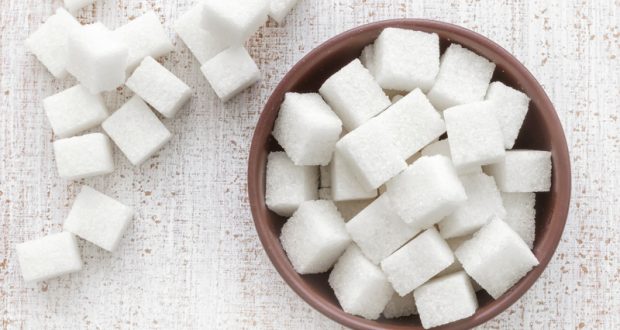By: Red Hot Mamas
Published: October 13, 2016
Contributed by Pam Rand RD, LDN, CDOE, RYT- Red Hot Mamas Medical Expert
Fruit, vegetables and dairy have NATURAL sugar but added sugars are abundant in processed foods! Women need to limit added sugars to 6 teaspoons (24 grams) per day and men up to 9 teaspoons (36 grams) per day…children even less depending on their age. Sugar is hidden in many processed foods. The flavored coffees and muffins that start your day could add up to your recommended daily total of added sugars before noon. It’s really not that difficult to calculate the added sugars in your diet especially if you have access to the internet. The ingredient list may list sugar in words we don’t recognize but the food label will show the added sugars in grams. The sugar in grams divided by 4 equals the teaspoons of added sugar. A typical soda contains 11 teaspoons of sugar (44 grams).
http://www.sugarscience.org/the-growing-concern-of-overconsumption/#.V86wpWXtBcY
Low fat cookies, dressings and yogurts are particularly high in added sugars and are not filling. When you’re tempted to buy a reduced fat cookie, salad dressing or yogurt, DON’T do it! Sugar is added to low fat products in the place of fat. As soon as these highly sweetened foods touch the tongue, our brain gets a message to tell the pancreas to produce a surge of insulin to pick up the sugar and bring to our cells for energy. As a growth hormone, insulin circulates in the blood stream and grows and inflames cells…fat cells, cancer cells, brain cells…not good.
https://www.oncologynutrition.org/erfc/healthy-nutrition-now/sugar-and-cancer/
On the other hand, NATURAL sugar, starch and fiber are what we use best for physical and mental energy with little to no leftover insulin. The human body is an unbelievable machine that works best with naturally occurring carbohydrates for energy. Real foods like fruits, vegetables, grains and legumes are carbohydrates that the body like to use for long lasting energy. A cup of FRUIT is about 2 teaspoons of sugar and is processed by the human machine SLOWLY due to the natural fiber vs. a handful of Skittles providing twice as much sugar and no fiber. Half of the Skittles stick to your teeth and the other half gets absorbed quickly with no lasting effects except the cavities of course!
Anyone, anytime can re-educate their taste buds away from processed simple sugars to natural sugar and complex carbohydrates. If candy, cookies, processed dairy and grains are your diet staples, start by adding in-season fresh fruit added to plain full fat yogurt with nuts on top as a planned treat. The yogurt, fruit and nuts have naturally occurring sugars that will become satisfying in no time when you choose this ‘mock’ sundae over an ice cream sundae! Speaking of ice cream, the high fat and sugar content calls to us in the evening when we’re tired and had a ‘stressful’ day. The evening ice cream habit can become an addiction quicker than you think and the only time a 1/2 cup serving (4 teaspoons sugar/16grams) is enough is when that’s all that’s left in the container.
The thing is if we wait too long to fuel the body, our brain will lead us to the quickly absorbed candy or ice cream. Planning ahead is key to preventing disease and staying healthy in our toxic food environment.
Calculate your daily added sugars and if necessary, redirect yourself by planning ahead and replacing simple sugars with wholesome complex carbohydrates that last longer. Fuel your mental muscle with conscious breathing and a daily 20-minute walk. Excuse me, I need to go walk now.
Pam is the author of YoGuides, book and CD. YoGuides is a personal wellness tool for use at work, home and school using breathing, exercise and guided imagery techniques which require absolutely no previous yoga experience.
Visit her website at Pamrand.org
 Red Hot Mamas In Charge of Change.
Red Hot Mamas In Charge of Change.




